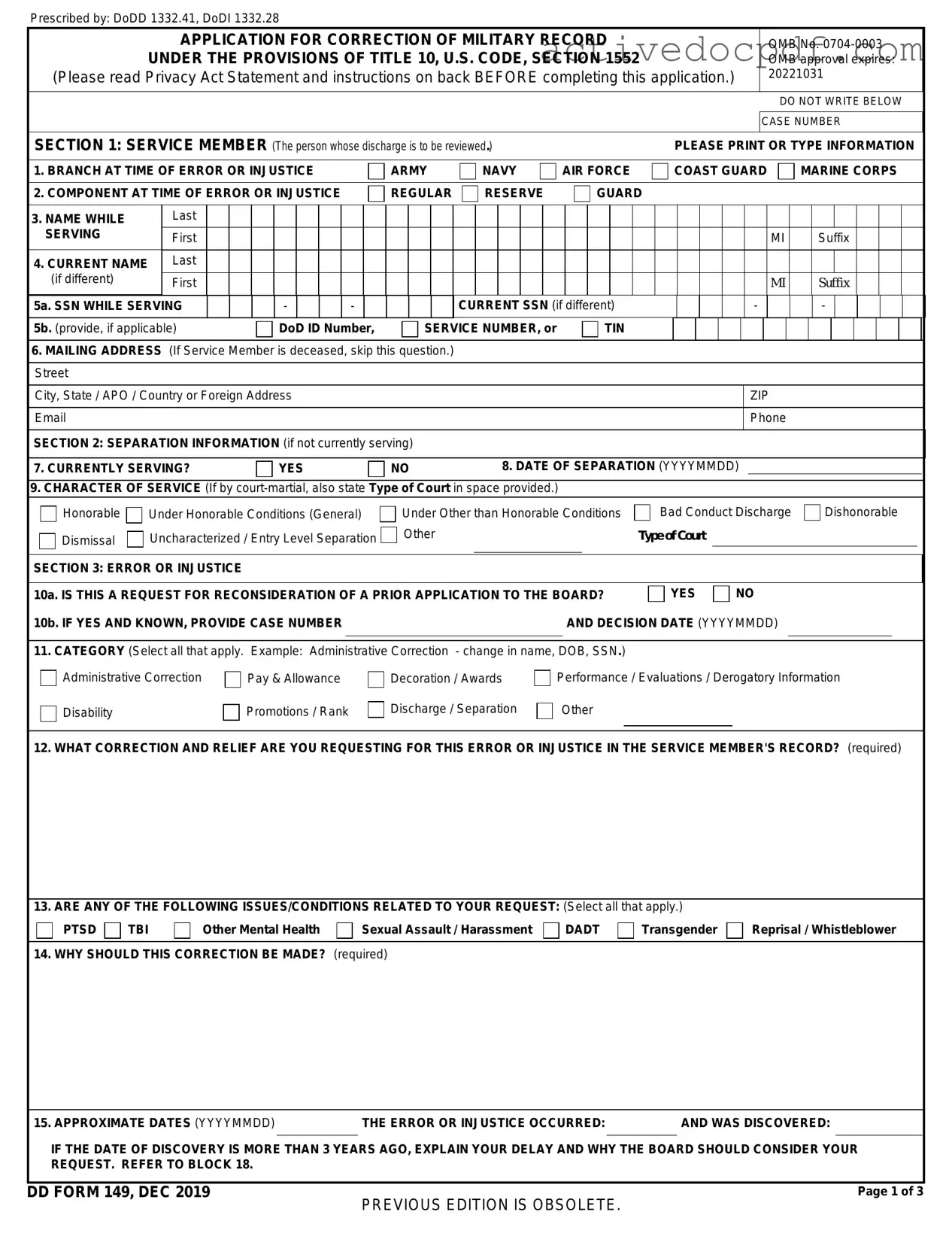The DD 149 form is a Department of Defense document used to apply for a correction of military records. Service members, veterans, or their representatives can use this form to request changes to their discharge status, personal information, or other details in their military records.
Eligibility to use the DD 149 form generally includes:
-
Active duty service members
-
Veterans
-
Former service members
-
Legal representatives or next of kin of deceased service members
All applicants must have a valid reason for requesting a correction, and the request must be made within a specific time frame after the event in question.
What types of corrections can be requested with the DD 149?
Common types of corrections that can be requested include:
-
Changes to discharge status, such as upgrading a discharge from less than honorable to honorable.
-
Corrections of personal information, such as name, date of birth, or social security number.
-
Adjustments to service dates or service-related awards and decorations.
-
Removal of erroneous information that may impact benefits or employment opportunities.
Filling out the DD 149 form requires careful attention to detail. Follow these steps:
-
Provide your personal information accurately, including your service number and contact details.
-
Clearly state the corrections you are requesting and provide a detailed explanation for each request.
-
Attach any supporting documents that substantiate your request, such as discharge papers or medical records.
-
Sign and date the form before submitting it.
The completed DD 149 form should be submitted to the appropriate Board for Correction of Military Records (BCMR) for your branch of service. Each branch has its own submission guidelines, which can usually be found on their official websites. Ensure you keep a copy of your submission for your records.
How long does it take to process a DD 149 request?
The processing time for a DD 149 request can vary significantly. Generally, it may take anywhere from a few months to over a year, depending on the complexity of the case and the volume of requests being handled by the BCMR. Patience is essential, as applicants will receive updates regarding their request status.
Can I appeal a decision made on my DD 149 request?
If your request is denied, you may have the option to appeal the decision. This typically involves submitting a new application or providing additional evidence to support your case. Review the denial letter carefully, as it may outline the specific steps for appealing the decision.
There is no fee associated with submitting the DD 149 form. The process is designed to be accessible for service members and veterans seeking to correct their military records. Ensure that you follow all instructions carefully to avoid delays in processing your request.
